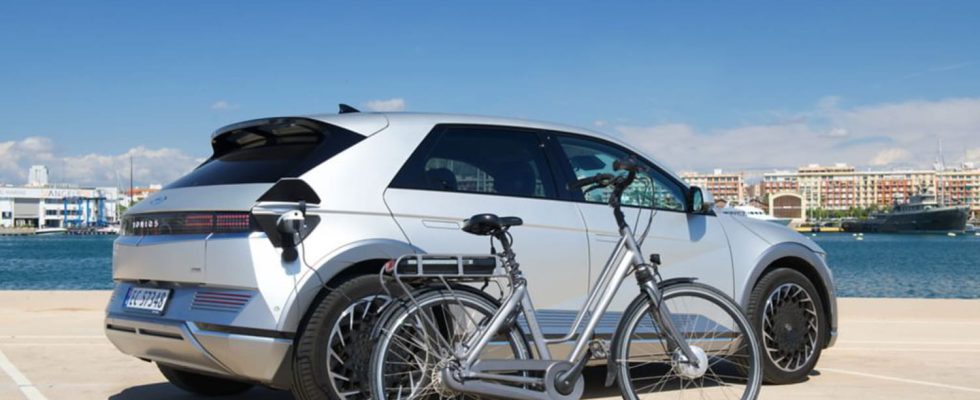A couple made many trips for a year at the wheel of an electric car. An experience that allowed them to make a discovery.
Many motorists are still wondering about the use of the electric car, especially over long or even very long distances. To try to find answers, a couple decided to multiply road trips at the wheel of an electric car and left their impressions on a blog.
Gia Mora and her husband live in Los Angeles and, in an ecological approach, have taken the decision to drastically reduce their air travel (to one flight every three years). The couple also separated from their hybrid SUV to acquire a 100% electric car. They then wore the tires of their Hyundai Ioniq 5 (also for sale in France) on American roads to the point of covering 18,000 miles, or 29,000 kilometers, in just under a year.
Enough to provide feedback that they therefore wanted to share. “Initially, I was skeptical about owning an electric car, let alone touring with it, writes Gia Mora. The fear of long charging times at isolated stations or being stuck with a flat battery is enough to discourage anyone from going electric. A year after the purchase, I am convinced of the interest of long-range electric vehicles.”
Electric cars less efficient in cold weather
“Electric cars are the opposite of gasoline cars when it comes to temperature regulation,” says the blogger. All electric cars, including the Ioniq 5, use more energy to heat than to cool. This is why electric cars lose range in cold weather. According to our estimates, the Ioniq 5 travels about 15% fewer kilometers on the same charge in cold weather than in warm weather.”
Still according to her, the temperatures cold have Also significant impact on battery charge time. “In moderate temperatures, with the 350 kilowatt fast chargers, the Ioniq 5 can go from 10% to 80% charge in less than 20 minutes. But on days when the temperature drops below 20 degrees Fahrenheit (about -5° Celsius), it can take up to 30 or 35 minutes.” Conversely, high temperatures and the use of air conditioning do not do not seem to affect the duration of the recharges.
“The cooling of the Ioniq 5 has very little effect on the autonomy and the charging time, specifies Gia Mora. Last summer in the heat of Phoenix, it only took a minute longer to reach full charge, and it’s much more comfortable to wait 20 minutes in the air conditioning than to spend five minutes in outside in a temperature of 100 degrees Fahrenheit (37° Celsius) to fill up at the pump.”
Good news for Gia Mora and her partner, they live in California, on the west coast of the United States, where most of the hottest states are located (Nevada, Arizona, Colorado…). And given the size of the country – nearly 10 million square kilometers – they still have many corners to explore before resolving to visit colder regions where their electric car will be less efficient!
